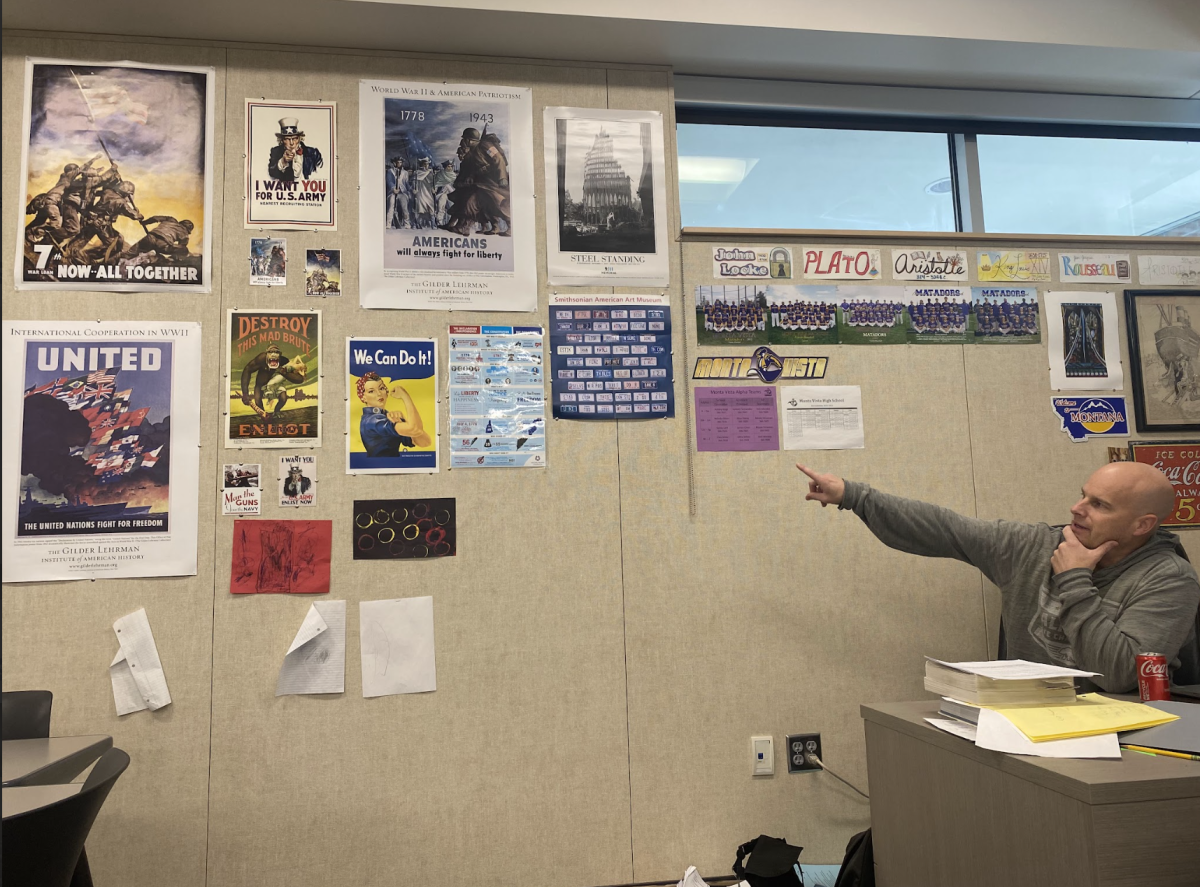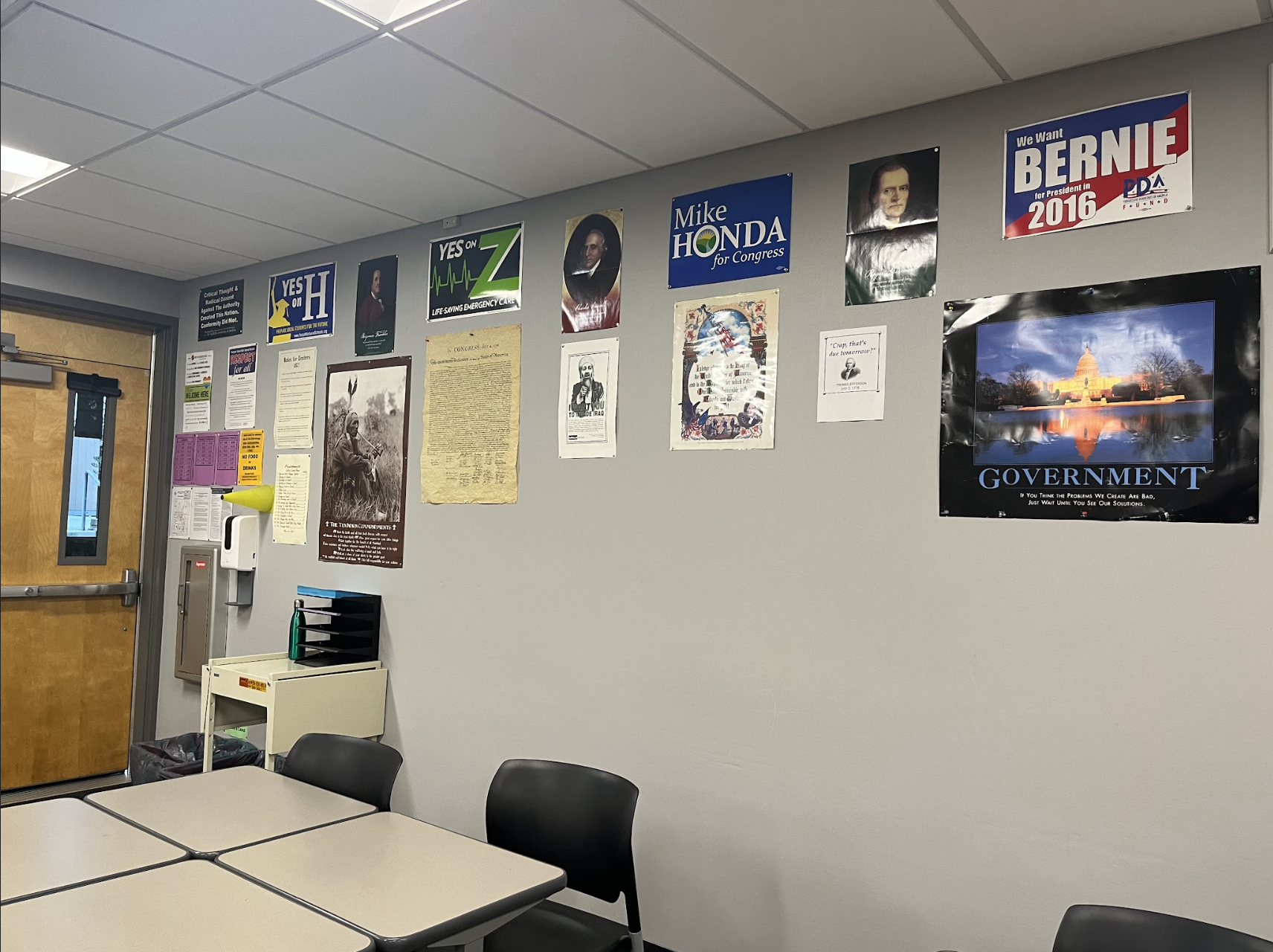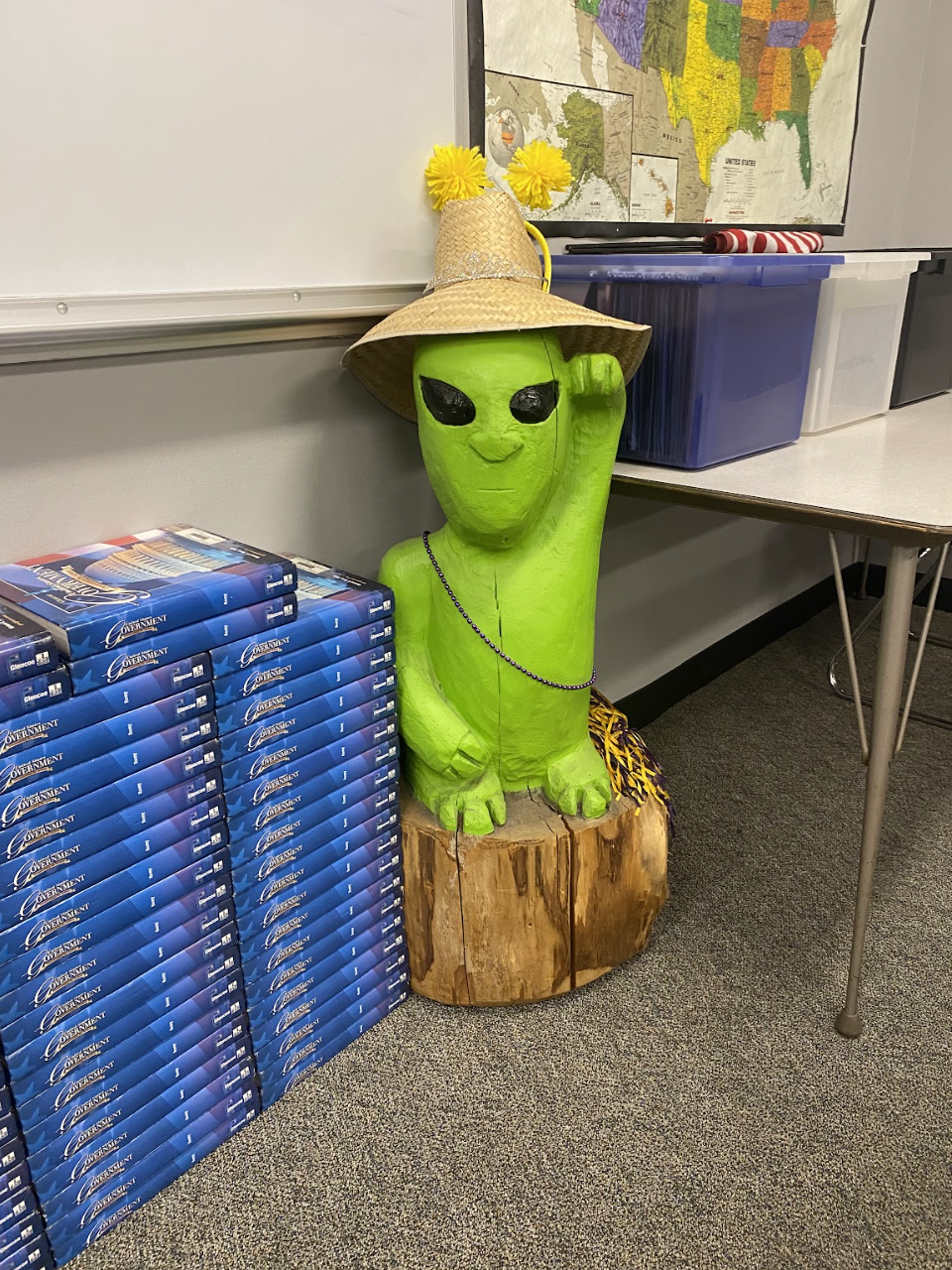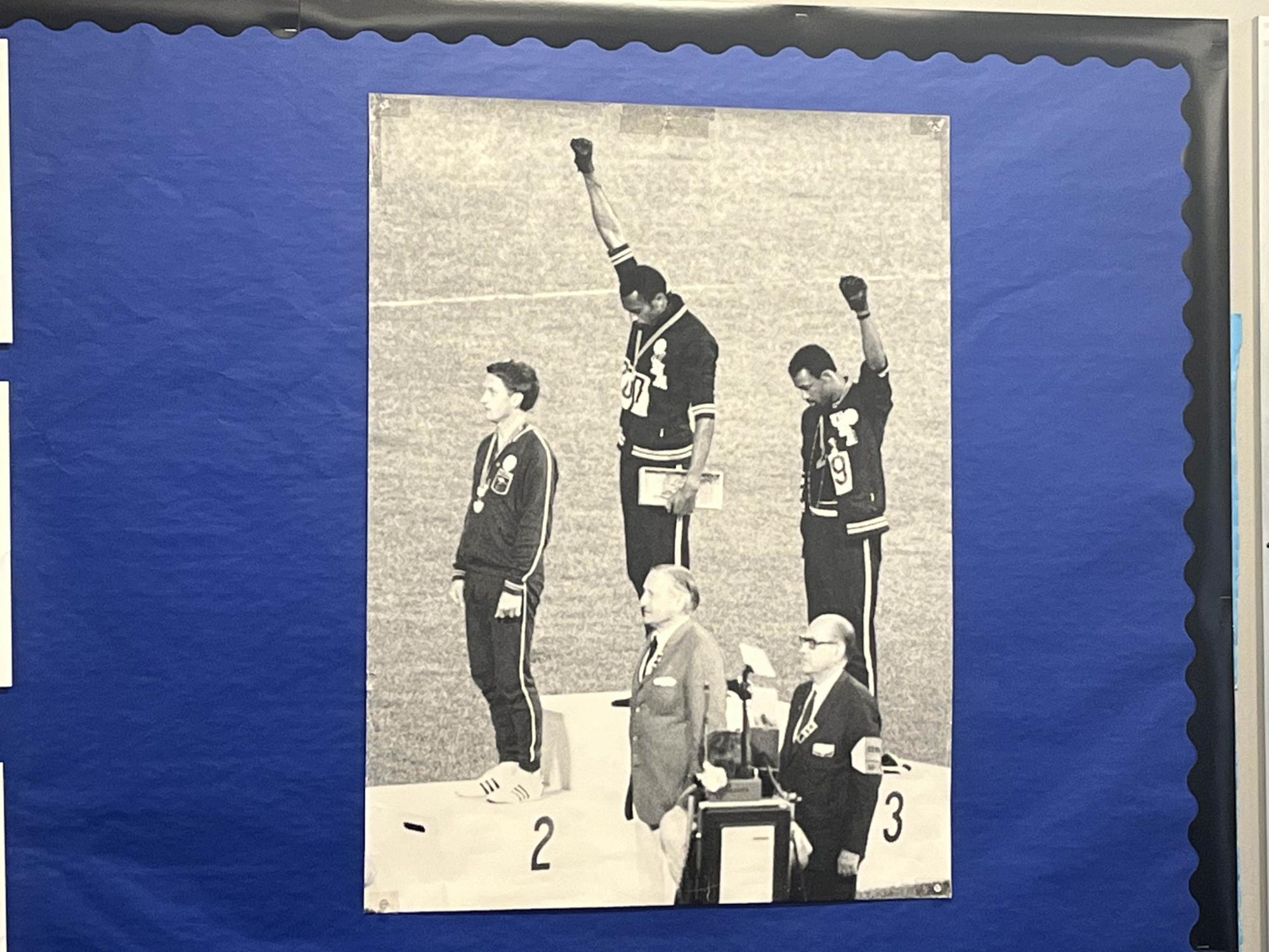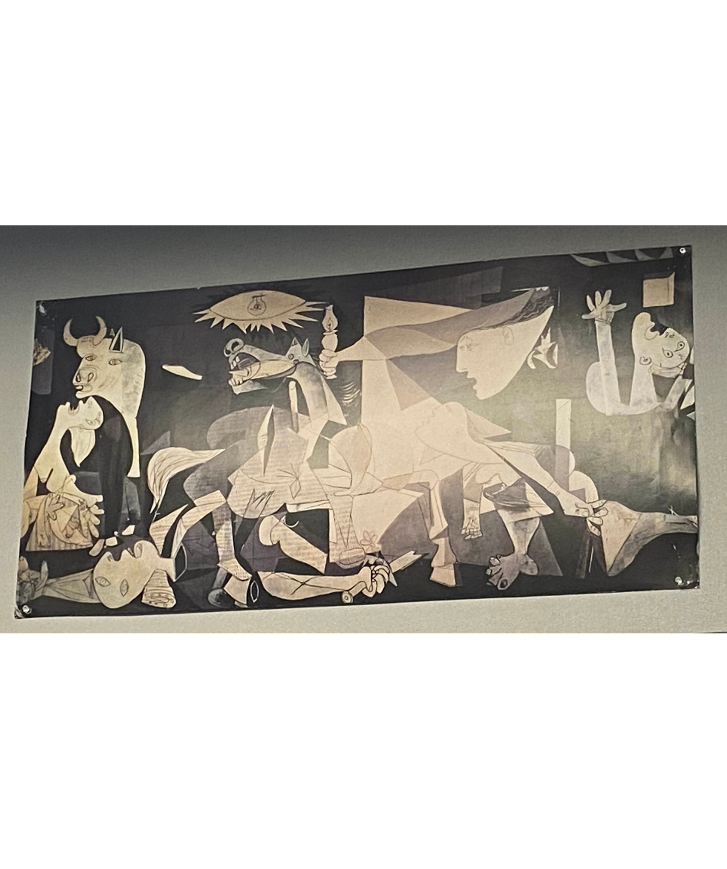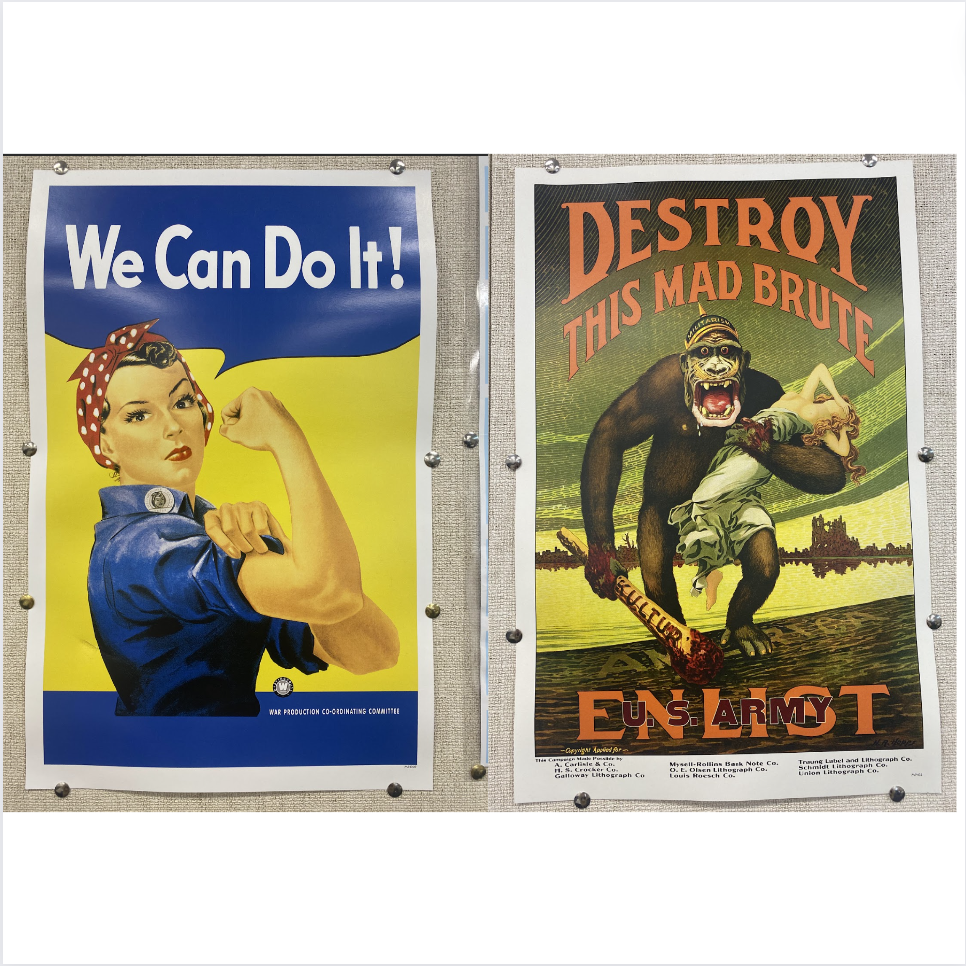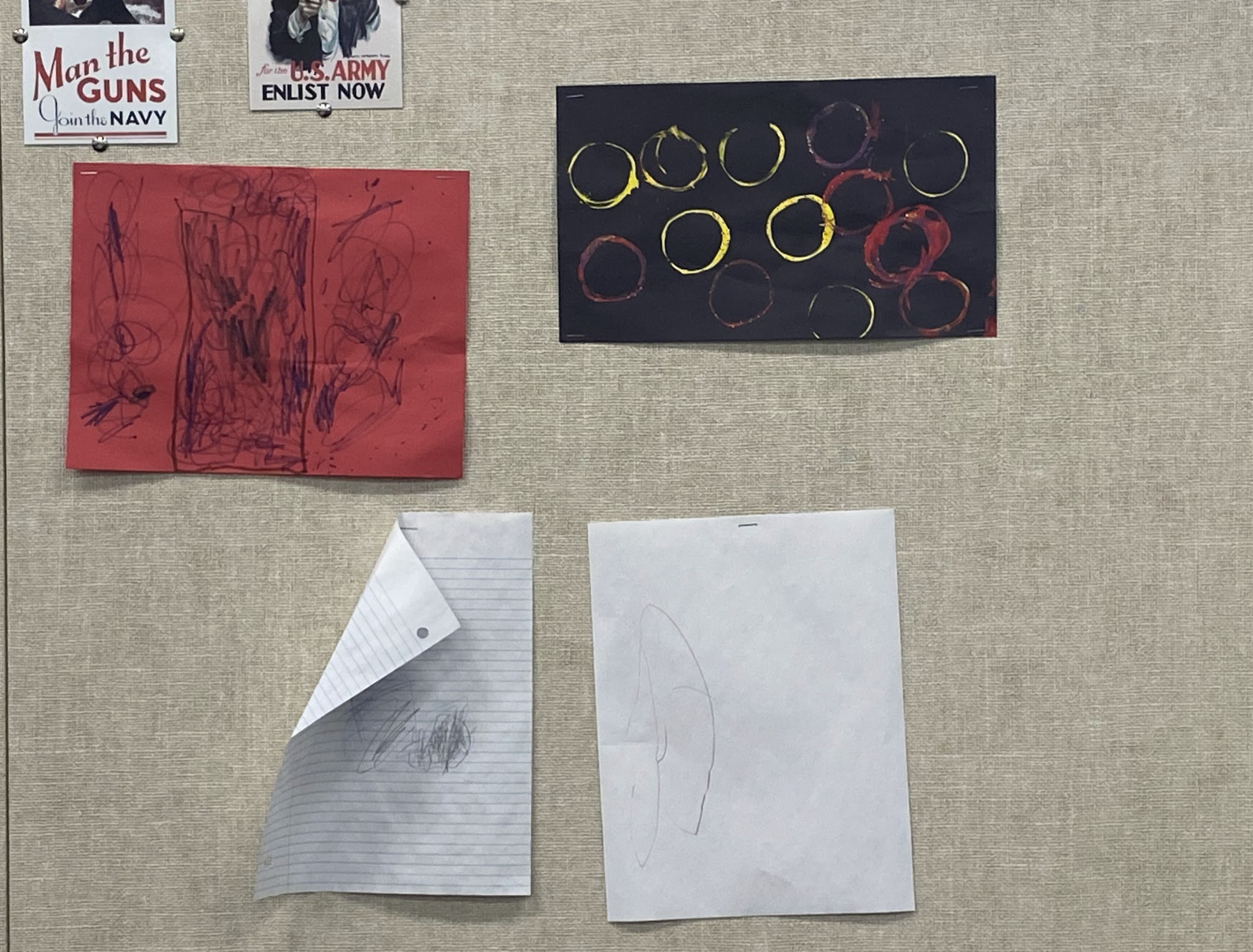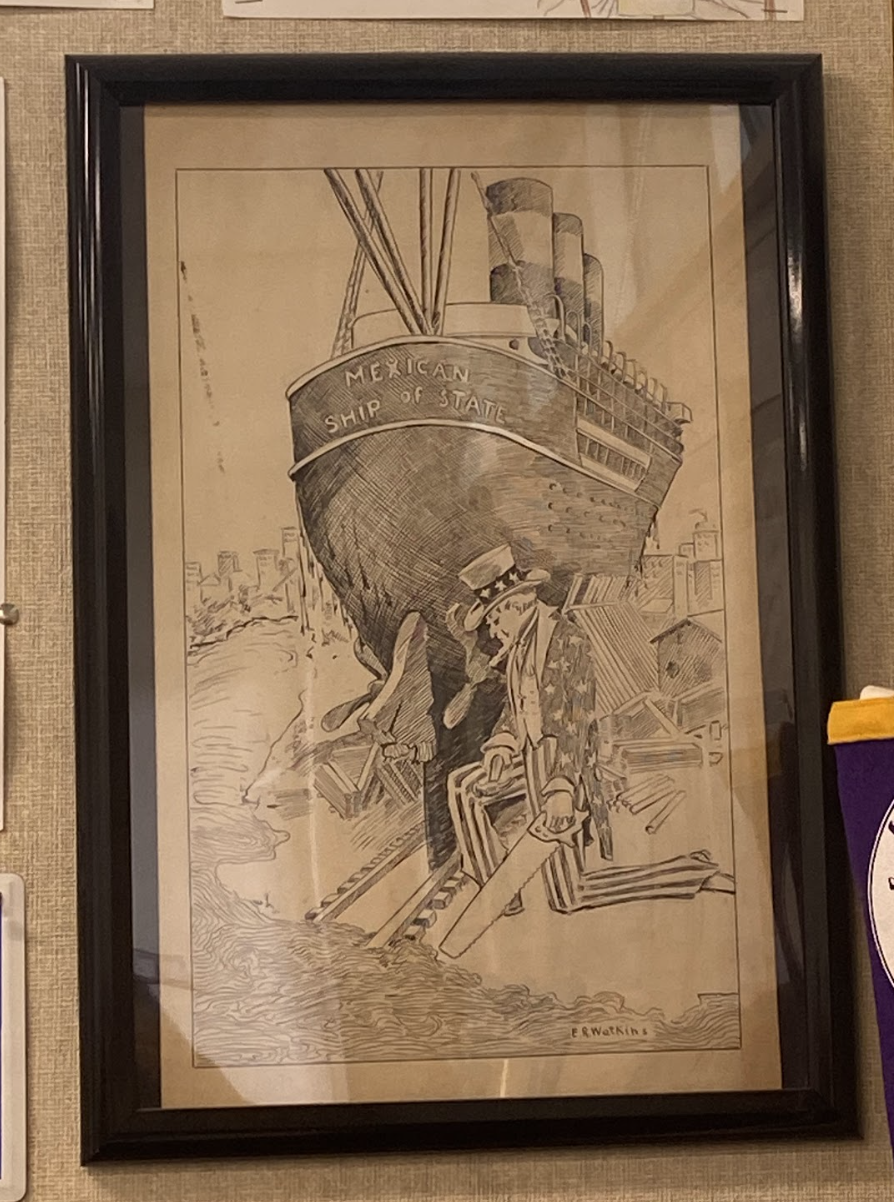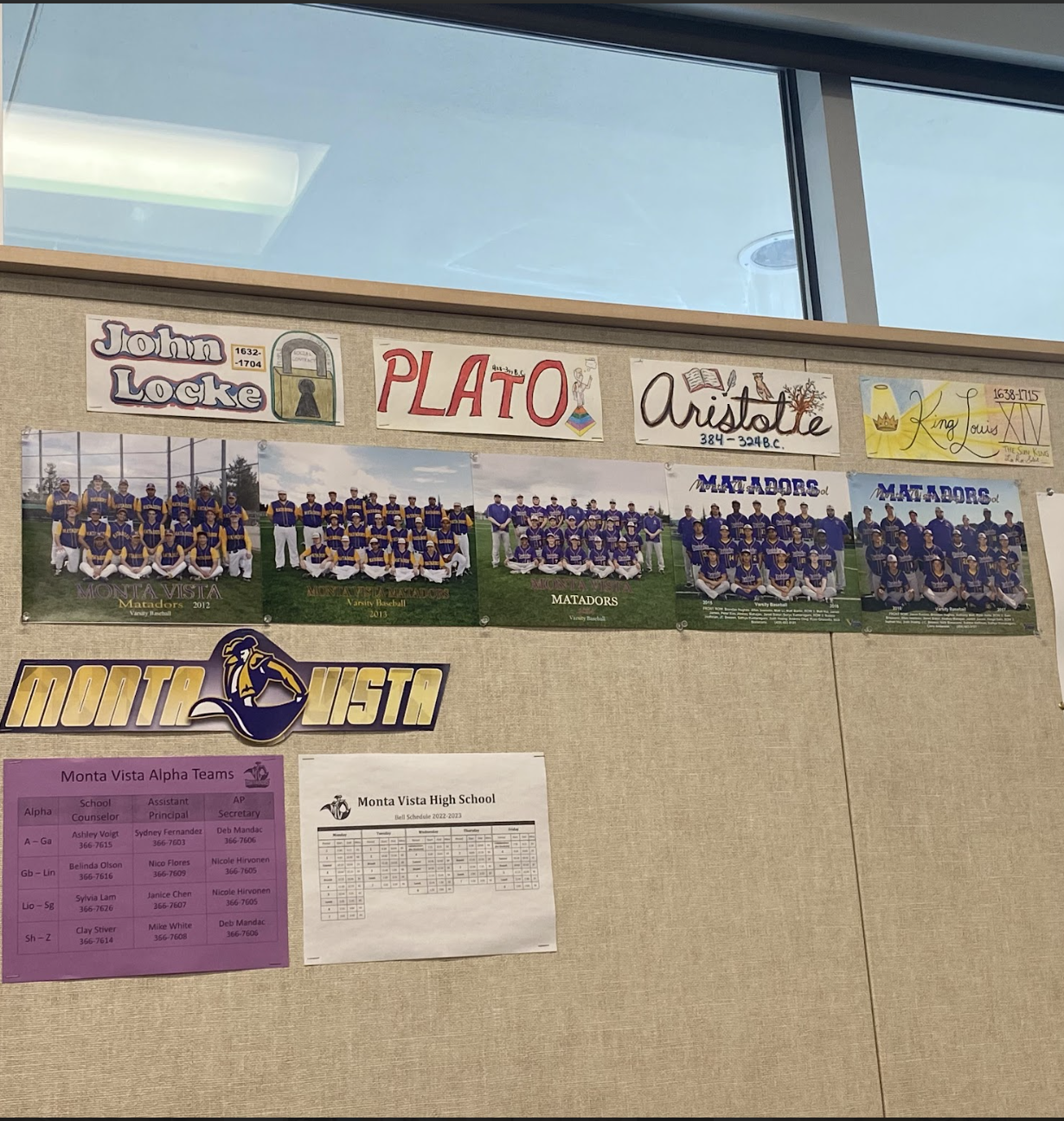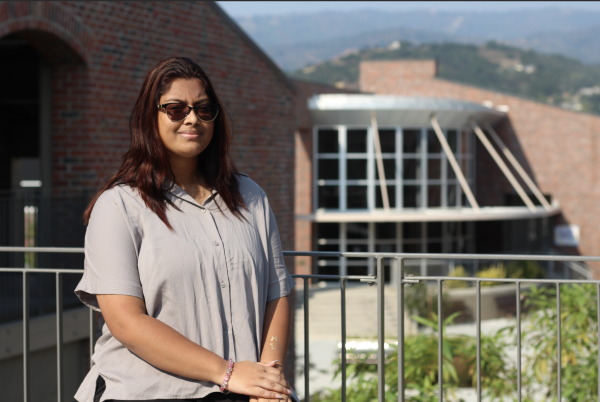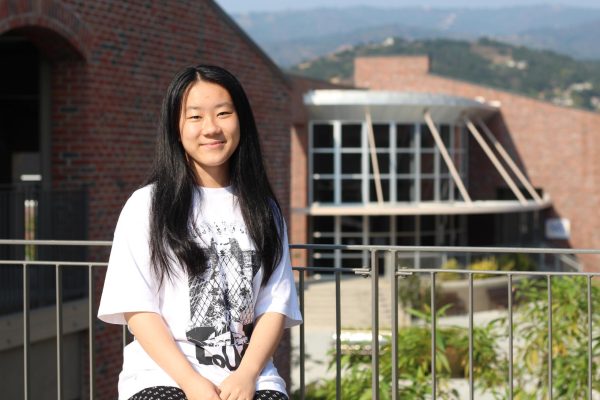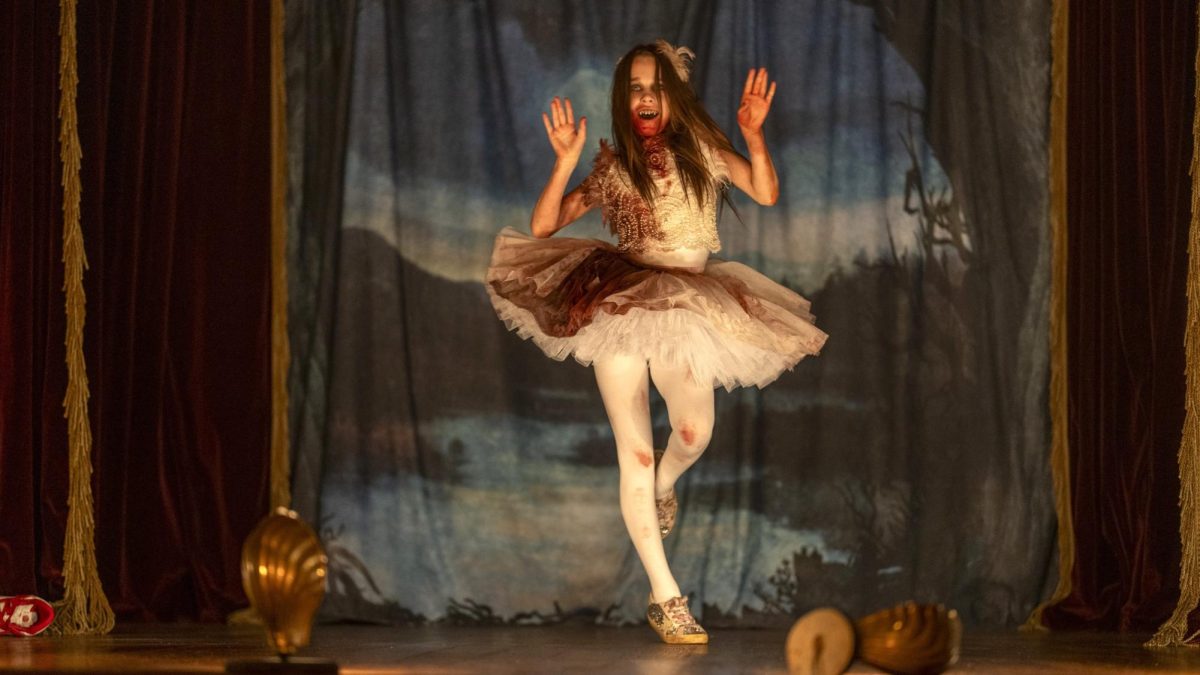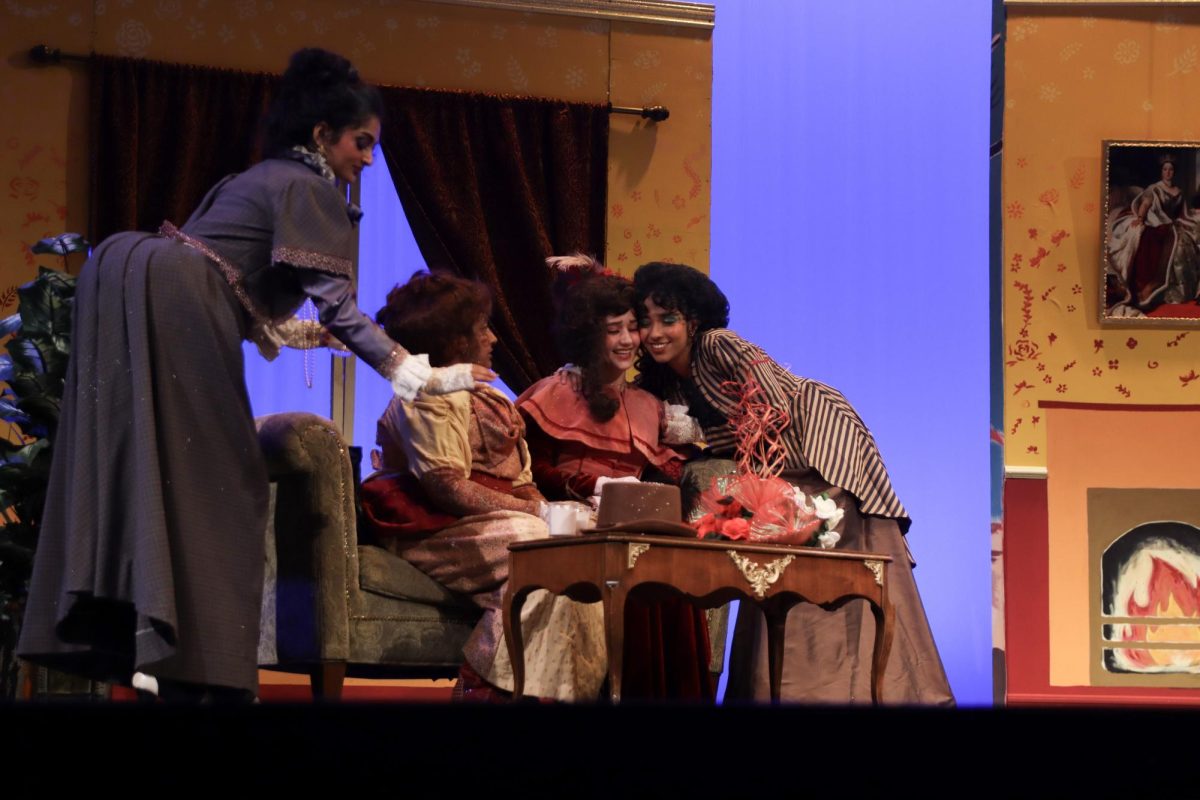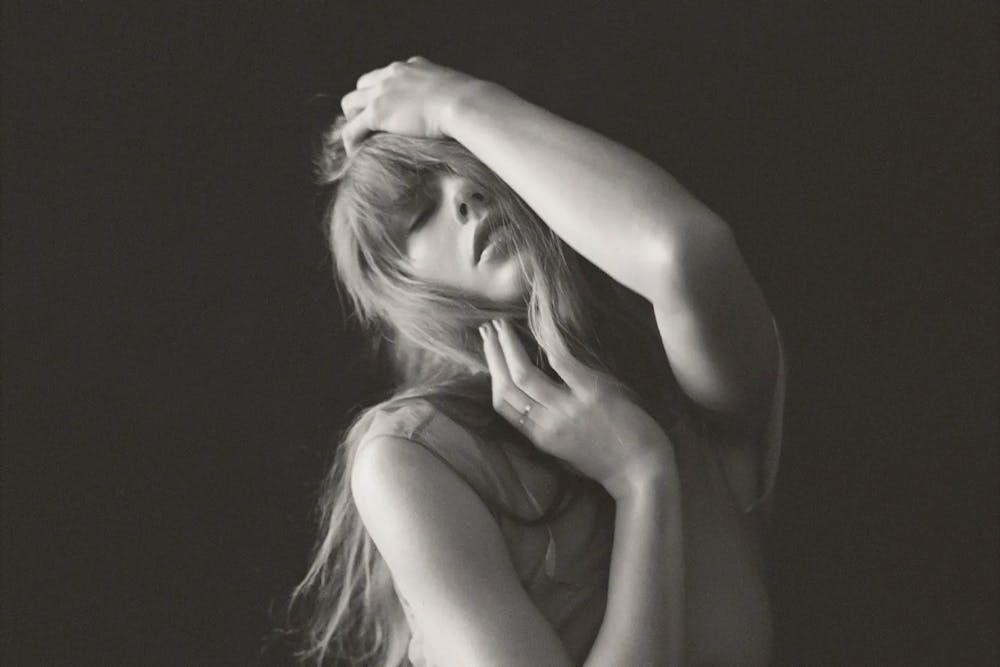Walking into government teacher Benjamin Recktenwald's room, people are immediately greeted by various historical and political posters, student projects, MVHS SNL merch and other witty decorations.
Each decoration carries a unique story, but the deeper incentive for putting them up is for a sense of familiarity, according to Recktenwald.
"Decorating the room makes me feel more at home because this is where I am all day long,” Recktenwald said. "Honestly, a lot of these decorations are here more for me than the students."
Recktenwald recounts when the school painted the beige classroom walls gray. He describes how the bare, cement-gray walls made a walk into the classroom similar to a prison visit. His posters and other decorations that had accumulated over the years give his room a splash of color.
As a government teacher, Recktenwald has various political posters decorating his room. In the past, after an election, he’s offered students the chance to go collect the various posters featuring the political campaigns of those running in the election from people’s homes for extra credit.
Over time, these posters have become somewhat integrated into his teaching.
“Every once in a while, during class, we'll have ballot propositions and I’ll point to some of the ballot proposition posters and mention what they’re for, but for the most part, they're just in the background,” Recktenwald said. “But, for example, today, I was actually talking about Bernie Sanders, so I mentioned the Bernie poster.”
Right above Recktenwald’s desk in his classroom, there are various t-shirts and posters that decorate the space. Notably, there is a student-made poster from his first year of teaching, back when he taught economics.
During those years, students had a project where they had to invent something and then display how they would market it. One of the groups of students came up with two dolls that were modeled after one of the students named Yoshiki. The dolls were Yoshiki himself, and his female alter ego Yoshika.
Recktenwald was drawn as Yoshiki and Yoshika’s arch-nemesis, a two-headed monster at the bottom of the poster with one head named “Ben” and the other “Ren.” He feels that the poster is a creative one that holds special memories for him even today.
In 2010, Recktenwald was driving home and, while in San Jose, saw a home with various wood sculptures in front of it.
“Most of them were bears,” Recktenwald said, “but then there was an alien and I had passed it three or four times. And I'm just talking and asking how much it costs. They said 40 bucks, and I was like, ‘Done.’ That's a bargain.”
Once he brought the alien home, Recktenwald noticed a bug crawling out its body and decided to spray it down with bug spray. He’s grateful for the decision, as the alien was surrounded by a circle of nearly 1000 bugs the next morning.
The alien, ever since, has had a home in the corner of Recktenwald’s room and is currently adorned with a sombrero, tiara and various beaded necklaces. The sombrero is used by Recktenwald to keep the sun out while he’s outside, and the tiara was a gift from a former student who was on the Homecoming court. Meanwhile, the necklaces are mainly things he has accumulated from school rallies.
The alien and its various accessories have been in Recktenwald’s classroom for quite a while, and while it may be a bit strange, he believes that’s the reason he likes it.
“It's just weird,” Recktenwald said. “I guess I'm weird. And I like weird.”
One of the first things students notice in history teacher Usiel Meraz-Cerna’s classroom is the Libyan flag proudly displayed on the wall opposite the door, next to his desk.
The flag, with three horizontal stripes of red, black and green, and a white crescent and star at the center, is used to represent the cause of the revolutionaries in Libya under the dictatorship of Muammar Gaddafi.
According to Meraz-Cerna, most students may not recognize the flag; however, to him, it represents a very important aspect of his experiences teaching and living abroad. After Meraz-Cerna spent five years teaching in the Bay Area, he and his wife relocated abroad in 2010 to teach at a Libyan international school.
“It was a very interesting experience moving to a country where very few people spoke English,” Meraz-Cerna said. “They only spoke Arabic and some Italian due to the history of Italy in Libya. That was a whole new experience, like living in a totally different world."
Despite the language barrier and new environment, the friendliness of the Libyan people made the stay very comfortable and enjoyable. According to Meraz-Cerna, the Libyan people were very open to meeting foreigners, welcoming, hugging and inviting him for coffee whenever they heard him speaking English while walking down the streets.
“They were just really eager to meet outsiders because they had not been able to for so many years,” Meraz-Cerna said. “People from outside the country could not visit in past years so people were extremely friendly.”
The Arab Spring, a series of revolutions in the Middle East, erupted in the winter of 2010, during Meraz-Cerna’s stay there. In Libya, the people were demonstrating and revolting to overthrow dictator Muammar Gaddafi, and Meraz-Cerna and his wife were forced to hide and eventually evacuate through a US-sanctioned ferry.
“Everything was shut down,” Meraz-Cerna said. “Businesses shut down and the foreign companies started evacuating their workers, so we had to hide in the school while the war was raging around us. It was a scary moment.”
Eventually, through a barrage of storms at sea, Meraz-Cerna made it to the island of Malta, to safety. Even though he left at a time of violence and is still not able to return due to the chaos ensuing in Libya, Meraz-Cerna’s memories of the country are very fond, and he holds admiration for the revolutionaries and demonstrators there.
“I felt strong support for the rebels who were fighting for their freedom and fighting for a reform to not live under dictatorship anymore,” Meraz-Cerna said. “Now, I have this flag of Libya as a kind of a reminder of the revolution because the flag itself is revolutionary.”
On the back wall of Meraz-Cerna’s classroom hangs a poster of the 1968 Olympics Black Power salute.
As the Star Spangled Banner played, gold medalist Tommie Smith and bronze medalist John Carlos in the 200-meter running event raised their gloved hands, as opposed to putting their hands on the hearts, to protest for Black rights. This act resulted in the expulsion of the two from the Olympic Games — with their medals taken away and only reinstated decades later — but the protest was forever remembered.
Being a San Jose State University alum, Meraz-Cerna recalls seeing a statue of the event as the centerpiece of the university. Admiring the message of the act, he has had the poster in his classroom ever since he started teaching.
“You have to stand up for what you believe in and you have to stand up for what is right, even when there are unpleasant consequences,” Meraz-Cerna said. “Even when the entire world is looking at you, you have to do what is right, and you have to commit to that. I think the poster is a really good reminder of that.”
On the back wall of Meraz-Cerna’s classroom, Pablo Picasso’s painting Guernica is displayed. According to Meraz-Cerna, the abstract painting has a painful message behind the oversized heads and misshapen necks, depicting the Battle of Guernica in Spain.
“It is a painting intended to be a reminder of the horrors of war, to remind us to value peace more than anything, and that when innocent people are being massacred in war, it only ever results in suffering,” Meraz-Cerna said.
When he first saw Guernica in person at an art museum in Madrid, he remembers being overwhelmed and in awe at the size of it, describing it as “three times taller than him.”
“It was so impressive in its size and scale, which makes the emotion of it and the tragedy of it so much more real,” Meraz-Cerna said. “It left a big impression on me.”
Every so often, he points the painting out to his students to remind them of its significance.
All around the classroom are hints of Meraz-Cerna’s cultural identity — a sombrero, a sarape and a Mexican flag.
Meraz-Cerna’s sombrero is an item that is very personal to him, as it is the one that he has worn while performing Mexican folk dances, which range from indigenous dances from Mexico’s history to dances that use modern instruments like guitars and drums.
Another piece of Meraz-Cerna’s culture is found covering the table at the front of the room — a sarape.
“It is a kind of blanket that has been used in Mexico by the common and peasant classes,” Meraz-Cerna said. “It is something that I grew up with, and it is a way for me to put a personal touch in the classroom. Since I am here all day, every day, I want to feel at home.”
The Mexican flag, hung proudly above Meraz-Cerna’s desk, ties all his cultural details together. It is representative of where his family comes from, and he celebrates the fact wholeheartedly, apparent from the rich assemblage of cultural items in his classroom.
“Part of what these personal items do is validate the fact that we can all celebrate our culture,” Meraz-Cerna said. “Even though most of my students are not Mexican themselves, what I hope that they realize when they come in here is that celebrating and representing our culture is something that we can and should do on campus. It makes being here on campus more interesting, knowing that while we all have a shared kind of American culture, we can differentiate ourselves and still be rooted in the places and the lifestyles that our families come from.”
History teacher Robbie Hoffman’s classroom is decorated with various different posters and photos. Next to his desk, a multitude of different political posters adorn the space.
A couple of the posters were bought by Hoffman at a print shop in Maui, Hawaii, years ago. He recalls that the print shop is no longer on the island after the Maui fires in August 2023, but the posters serve to remind him of where he got them from. A lot of the posters around Hoffman’s room are from various places he has visited and purchased souvenirs from, but the story behind these are especially meaningful as the store is no longer there.
The posters are examples of historical campaigns and events, so Hoffman makes sure to integrate them into the history classes he teaches.
“We look at political cartoons in US history and AP US History,” Hoffman said. “So I like to put up things around the room that are historical, and that we can analyze from time to time.”
Below the political posters next to Hoffman’s desk, a variety of scribbles and drawings are put up on the wall.
“There are other things in here that have nothing to relate to the history like down here,” Hoffman said. “This is my son's wonderful artwork.”
Hoffman’s son periodically visits his classroom and inquires where his art is, so Hoffman makes sure to put up a wide variety of what his son makes. Notably, the drawing in red, while Hoffman says it might be difficult to tell, is a volcano his son made in school.
Above Hoffman’s desk, there is a framed photo of an old political cartoon drawn by his distant uncle. The relative was a political cartoonist in the United States Navy, and Hoffman can see a variety of the cartoons drawn by him in a navy book he has at home.
This cartoon was saved by Hoffman’s mom’s aunt, who had saved everything done by the cartoonist during her lifetime. Once she passed, Hoffman and his mother were able to find and keep the items. Since Hoffman’s family — excluding himself — is made up of artists, he likes to put up these examples of things they have made.
In a line on the wall behind Hoffman’s desk and on the side of his classroom, a wide variety of hand-drawn name tags with the names of different historical figures are put up.
The name tags are from Hoffman’s time as a World History teacher, which he still taught when he moved into his current classroom seven years ago. In World History, his students would do a project where they would have to dress up as a key figure from the Enlightenment. The drawings were the name tags that each student would wear, and Hoffman recalls that he has had them for around 15 years, putting them up because he thought they looked neat.
While the memories of the project are nice, Hoffman no longer does this project in his classes, so he feels the decorations are a bit outdated.
“I thought they were cool, so I put them up. But I don't teach World History anymore,” Hoffman said. “And they’re still there, since I haven’t gotten to taking them down.”





